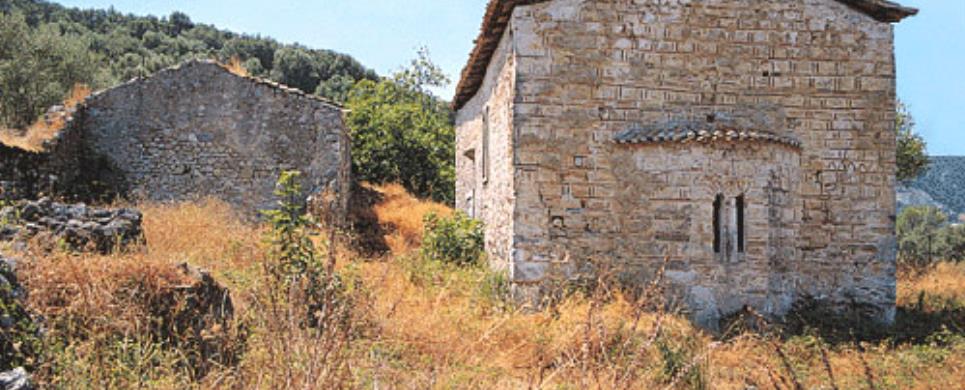Listed 1 sub titles with search on: Sights for destination: "APOLPENA Village LEFKADA".

The monument is located in the village of Apolpaina, 2 km. to
the south of Leucas. It is a single-aisled, wooden-roofed church, with a three-sided
apse at the east, which has a bilobe window. The walls are built with unworked
stones but the lower parts and the apse are distinguished by the use of the "cloisonne"
masonry (stones enclosed by bricks). The main entrance is in the north wall of
the church. Fragments of the wall paintings are preserved on the south and east
walls of the interior. The east wall was covered with a monumental representation
of the Ascension, which has been removed and is now kept in the Byzantine Museum
of Athens.
The
church of Panaghia Hodeghetria was the catholicon (main church) of a monastery.
It was built in the middle of the 15th century and is one of the oldest Byzantine
monuments on Leucas. According to tradition, in this monastery hermited Helen
Palaeologhina, sister of John VIII Palaeologos and mother-in-law of the last duke
of Leucas, Leonardos II Tokkos. The iconographic program of the wall paintings
in the church is probably connected to her. The frescoes are dated to the middle
of the 15th century and are distinguished for the fine workmanship. In the beginning
of the 18th century, the church became the metochion (dependence) of the monastery
of Saint John Theologos at Karya, and had considerable real estate until 1927,
when it was purchased by the Greek state.
The south wall of the enclosure and its north supporting wall were
reconstructed in 1977. The lintel of the gate of the circuit wall and its Byzantine
inscription were cleared and restored and the pictorial decoration of the walls
was freed of all the recent coatings. Consolidation work of the masonry was carried
out in 1960 and 1980.
The monument is used as a church but opens only on certain days of
the year.
In 1960, the greatest part of the wall paintings, which were painted
over, was revealed. Their cleaning was completed in 1969, under the auspices of
the Archaeological Society, and 14 fragments were removed and transferred to the
conservation workshop of the Byzantine Museum in Athens.
Receive our daily Newsletter with all the latest updates on the Greek Travel industry.
Subscribe now!